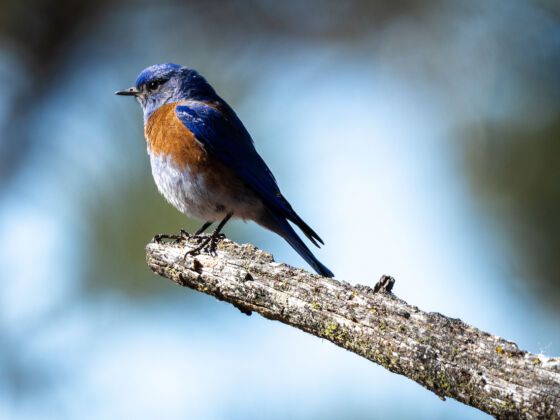I WALK NORTH in the Mojave. I listen to my friend on the cell phone. She tells me of her recent work with a healing process called EMDR. I’m about to cross the two-lane highway. Something lies on the edge of the asphalt. I look. It is a dead bird — gray and black and white. I pick it up. There is no mark on it, no blood or broken bone. I can’t bear to think of it being flattened.

The feathers are exquisitely soft against the palm of my right hand. I am walking to the Joshua Buddha and I know to carry the bird to the dead tree that looks like a gray seated Buddha.
My friend begins to tell me the details of the second EMDR sessions. I realize I am not listening because I need to concentrate solely on carrying the bird to the Joshua Tree. I tell her I will call her back.
At the tree, I tuck the bird in the broken space between the stump and a dead branch. He — for I know somehow it is a he — is just below what would be the head of the Buddha. The bird faces east. I was taught that is the direction of going forward, that is the direction of gate gate paragate; gone, gone, gone to the other shore.
Then, of course, I begin to wonder. What is the human name for this gray, black and white bird? I am a woman who names.
***
That evening — in the throes of a rattling fear that has possessed me, weeks of conscious withdrawal from everything that numbs me — I open Roger Tory Peterson’s Western Birds. I settle on the possible identity of the bird: a Gray Flycatcher, though the beak is not quite right.
The bird I carried in my hands and now in my mind had a little hook at the end of the top mandible and the flycatcher’s mandible is smooth. I turn a few pages. The name Loggerhead Shrike appears. The picture looks similar.
This morning — in my 27th hour of coffee withdrawal, a choice I would not have made save for the intensity of my fear these days — I decide that I will take Roger Tory Peterson out to the Joshua Buddha. If the bird has been taken, it will have been taken.
The bird is there, intact, facing east. I remove it from its resting place and place it gently on the downed trunk of the Joshua Buddha, the same trunk that contains a tiny white spine in a deep crack in the bark.
I open Peterson’s book. The bird is a Loggerhead Shrike. I am, for an instant, in love with the workings of my mind. I am in love with knowledge.
I want more. I read this: “(Shrikes): Songbirds with hook-tipped bills, hawk-like behavior. Shrikes perch watchfully on treetops, wires, often impale prey on thorns, barbed wire.”
I restore the bird to its resting place.
***
I walk home and go to the old Joshua Tree at the back of my cabin. I wrap my arms around it and say, “Thanks to you and your cousin to the north.”
Only later do I remember that the first action I took when I moved to this cabin was to remove the strands of rusted barbed wire impaling the old Joshua. My second action was to pry long rusted brads out of its bark.
I stop writing. I feel the soft feathers of the Loggerhead Shrike. I feel the rough wire against my skin. Old and new have no meaning. Only the Great Circling Around. Only that shape of love.